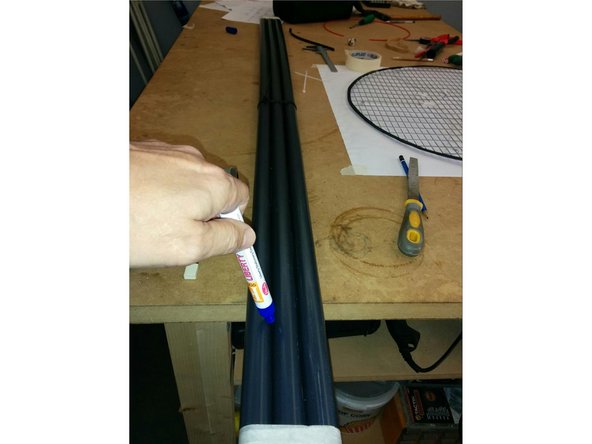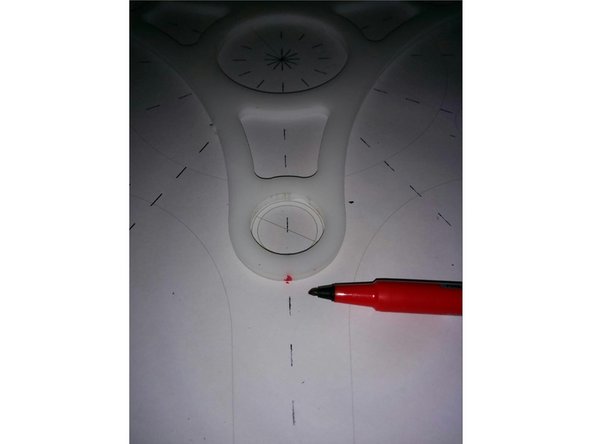Introduction
This is a guide to build Helical UHF Antenna v2. The central frequency is 434Mhz and the antenna is can be Left-Hand or Right-Hand Polarized.
Needed Files
All needed files are available in the SatNOGS Helical Antenna Repository: https://github.com/satnogs/satnogs-anten...
summary files for RHCP antenna in stl and dxf format
Helical-434-8-RHCP.stl
Helical-434-8-RHCP.dxf
summary files for LHCP antenna in stl and dxf format
Helical-434-8-LHCP.stl
Helical-434-8-LHCP.dxf
printable blueprint file for RHCP in dxf and pdf format
Helical-434-RHCP-printBase.dxf
Helical-434-RHCP-printBase.pdf
printable blueprint file for LHCP in dxf and pdf format
Helical-434-LHCP-printBase.dxf
Helical-434-LHCP-printBase.pdf
6 radial base file for plexiglass or polycarbonate base
Helical-434-6radialBase.dxf
Helical-434-6radialBase.pdf
plexiglass or polycarbonate triangular connector files
Helical-434-Triangle.dxf
Helical-434-Triangle.pdf
cooper matching triagle
Helical-434-CooperTriangle.dxf
Helical-434-CooperTriangle.pdf
dimensions table
Helical-434-8.xls
Characteristics calculation site.
http://www.vk2zay.net/calculators/helica...
All calculations are on axial mode
Any change of the pipes diameter must take into consideration the fact that they are attached on constant diameter of 220mm
Precise dimensions are provided on the files linked
For RHCP and LHCP antennas
Letters A,B and C are marking the 3 PVC pipes
The RHCP design uses a Β-Α-C arragement and the LHCP a C-A-B arrangement
-
-
Position and secure the printout of the base on your workbench
-
Position the reflector grid axially, and mark a perimeter of 552mm to cut.
-
Cut the the perimeter and adjust adhesive tape around it to avoid cutting ourselves.
-
Optionally after finishing up and positioning our antenna on a rotator tape can be removed.
-
-
-
Position the plexiglass 6 radial base on the corresponding mark on the printout. In the case of a LHCP antenna, follow the picture provided, for a RHCP antenna it should be vice-versa.
-
Stabilize the plexiglass on the printout using adhesive tape. Position the reflector on the plexiglass and use tie-ups and small wires to tie-up the six small peripheral holes and the 3 inner holes that will not be used to place PVC pipes through them.
-
Cut the grid on the positions the pipes and the N-type connector will be placed.
-
-
-
Cut 3 PVC pipes 1430mm long
-
Connect them in parallel and mark a straight line through all three of them
-
This line will be used for the horizontal positioning of the contacts with the helical and the triangular plexiglass supports.
-
-
-
Mark the bottom of your pipes as A,B and C.
-
-
-
Mark the positions of the helical and the plexiglass supports on each pipe using the provided dimensions table starting by -40mm
-
-
-
Using the printout mark the triangular plexiglass on the alligment of the tube center as depicted
-
-
-
Position the tubes on the plexiglass base and adjust the triangular stabilizers on their corresponding positions
-
-
-
Turn the pipes to align to the marks on the triangular stabillizers
-
-
-
Apply PVC-plexiglass glue and stabilize the second triangular stabilizer first.
-
Don’t apply glue to the first stabilizer because it will be fixed on the final antenna application on the ground station.
-
Glue the basis and the third triangular stabilizer. Apply glue to both sides and let it be rigid.
-












